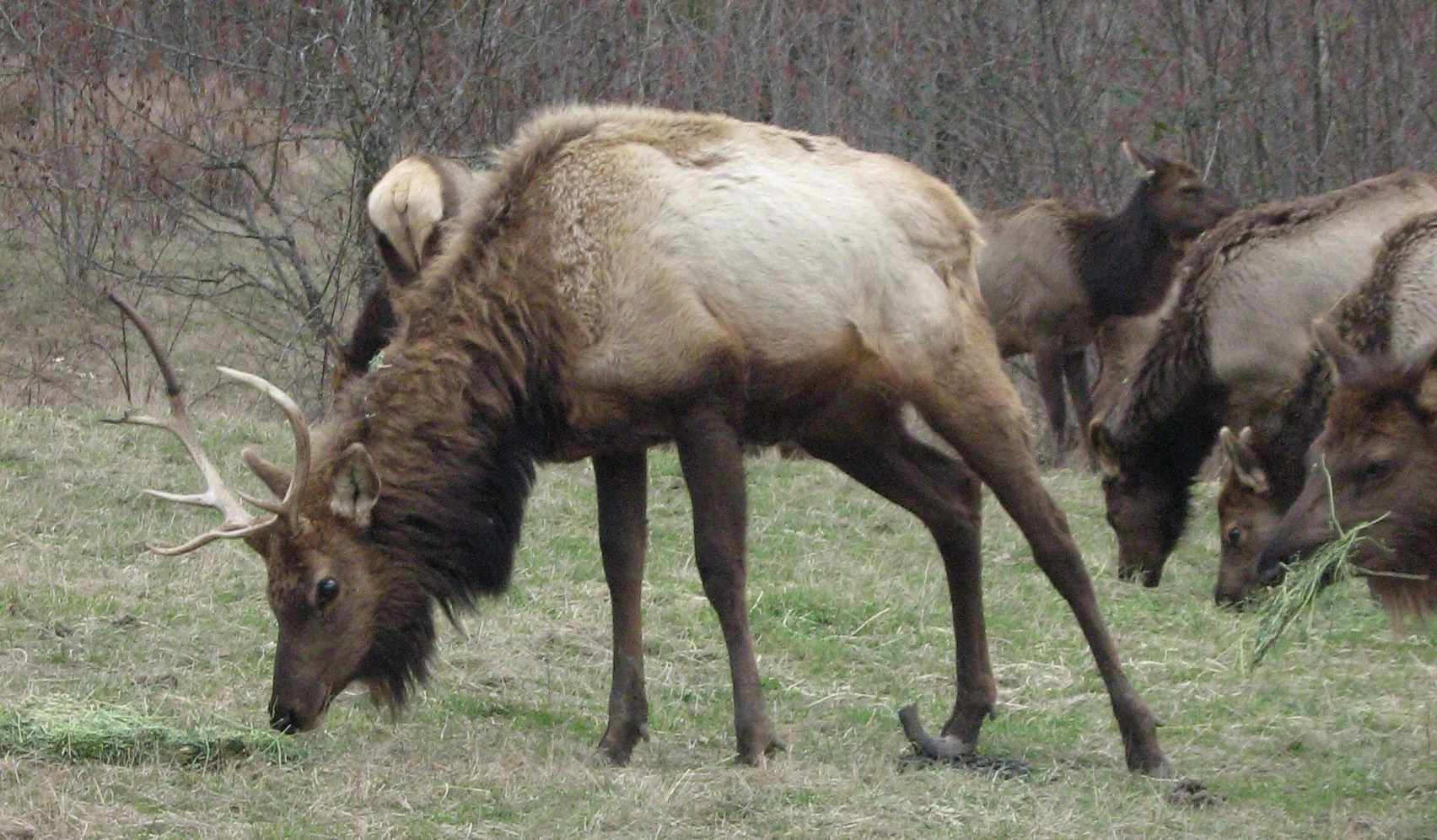OLYMPIA — As the Department of Fish and Wildlife receives more reports of elk with painful limping, the agency is asking for help from researchers as far away as England to figure out what is causing the condition.
So far, there’s no clear solution to the problem, and it may be impossible to eradicate, WDFW veterinarian Kristin Mansfield told the Fish and Wildlife Commission on Saturday.
Hoof rot has been reported in Southwest Washington since the mid-1990s and WDFW started researching it in 2008. But Saturday was the first time that the commission, which sets policy for WDFW, got a formal briefing on the subject.
“This is very serious disease,” Mansfield said. “This is by far the most troubling and disturbing disease I have worked with in my 20 years as a veterinarian.”
Nate Pamplin, WDFW assistant director for wildlife, called hoof rot “an extremely important issue for the agency. It’s causing great concerns with the public and the hunting community in Southwest Washington.”
WDFW started hearing of hoof rot here about a decade ago, with reports first concentrated in the lowlands close to Interstate 5. In recent years, it’s spread to the high country. Mansfield said that during biologists’ helicopter surveys of elk the past two years, “Many groups of elk they saw up in the Mount St. Helens hills were limping.”
Affected elk have overgrown or missing hooves.
Brady Wojtowicz, who lives at Eco Park on Spirit Lake Memorial Highway, told the commission that out a herd of 17 elk there, seven have hoof rot. “Some are so bad they can’t set their hooves down,” Wojtowicz said. He saw one bull lying down but still alive that was missing an entire back hoof.
“It’s a horrible disease,” Mansfield said. “As a veterinarian, it is horrible to see the suffering of these animals.”
Mansfield said the condition affects all ages of elk and both sexes. Though some types of hoof rot affect domesticated animals, livestock living in the same areas as elk with hoof rot don’t have problem, she said. So far, no cases of hoof rot have been reported in Oregon.
Hoof rot could be caused by infection or a deficiency of copper or selenium, Mansfield said. However, elk are OK in other regions of the state where soils are low in these elements, she said.
There is no indication of infection above the hooves in afflicted elk. “I’m comfortable in saying the meat is safe to eat,” Mansfield said.
In March, WDFW killed 12 elk in Southwest Washington and four from east of the mountains and sent tissue samples to several laboratories across the U.S. for analysis. Some of it went to the University of Liverpool, England, because researchers there have experience with hoof rot in domesticated sheep.
This summer, the agency may collect calves that are only a few months old to see whether hoof rot is passed along from cows to calves.
Though biologists don’t yet know what is causing elk hoof rot, Mansfield and Pamplin outlined what, if anything, could be done in response.
Farm animals with hoof rot get antibacterial foot baths, bandages and vaccinations. However, with wildlife, prevention “is just about the only tool we have,” Mansfield said.
Mansfield said that even large-scale efforts on domestic sheep in New Zealand and Australia haven’t eradicated hoof rot.
Here, “It’s too late for prevention, but perhaps we can prevent the spread,” Mansfield said. “We’re not going to eradicate it.”
If hoof rot is found to spread when too many elk gather together, culling the herd by WDFW employees or master hunters might be an option, Pamplin said. He questioned whether the public would tolerate a culling effort, however.
So far, hunting regulations haven’t been changed specifically in response to hoof rot, he said. WDFW started trying to reduce the size of its Mount St. Helens elk herd by issuing more hunting permits before hoof rot became as prevalent.
Fish and Wildlife commissioners praised the presentation but said the agency needs to do a better job of publicizing the research it’s doing on hoof rot.
Mark Smith, who owns Eco Park and has been active in wildlife management issues, suggested WDFW do studies on live captive elk. Smith also suggested that changes in herbicide use that limit the amount of elk forage might be linked to hoof rot. He added that hunting pressure that runs from early September into December weakens the animals.
WDFW plans to form a task force on hoof rot including representatives of industrial timberlands, the Rocky Mountain Elk Foundation and governments.
The Clark County commission already has gotten involved, sending its employee, Axel Swanson, to the meeting. Swanson, a former Cowlitz County commissioner who lives in Castle Rock, asked the Fish and Wildlife Commission “to keep this on the front burner. We can’t afford any more lag. We need answers.
“It’s a huge issue,” Swanson said. “It’s a very visible issue. It’s a sad thing to witness.
“If cow elk continue to wander into city limits on three legs and lay down and die, you’re going to hear about it,” Swanson said. “That’s what’s happened, at least where I live, right now.”



